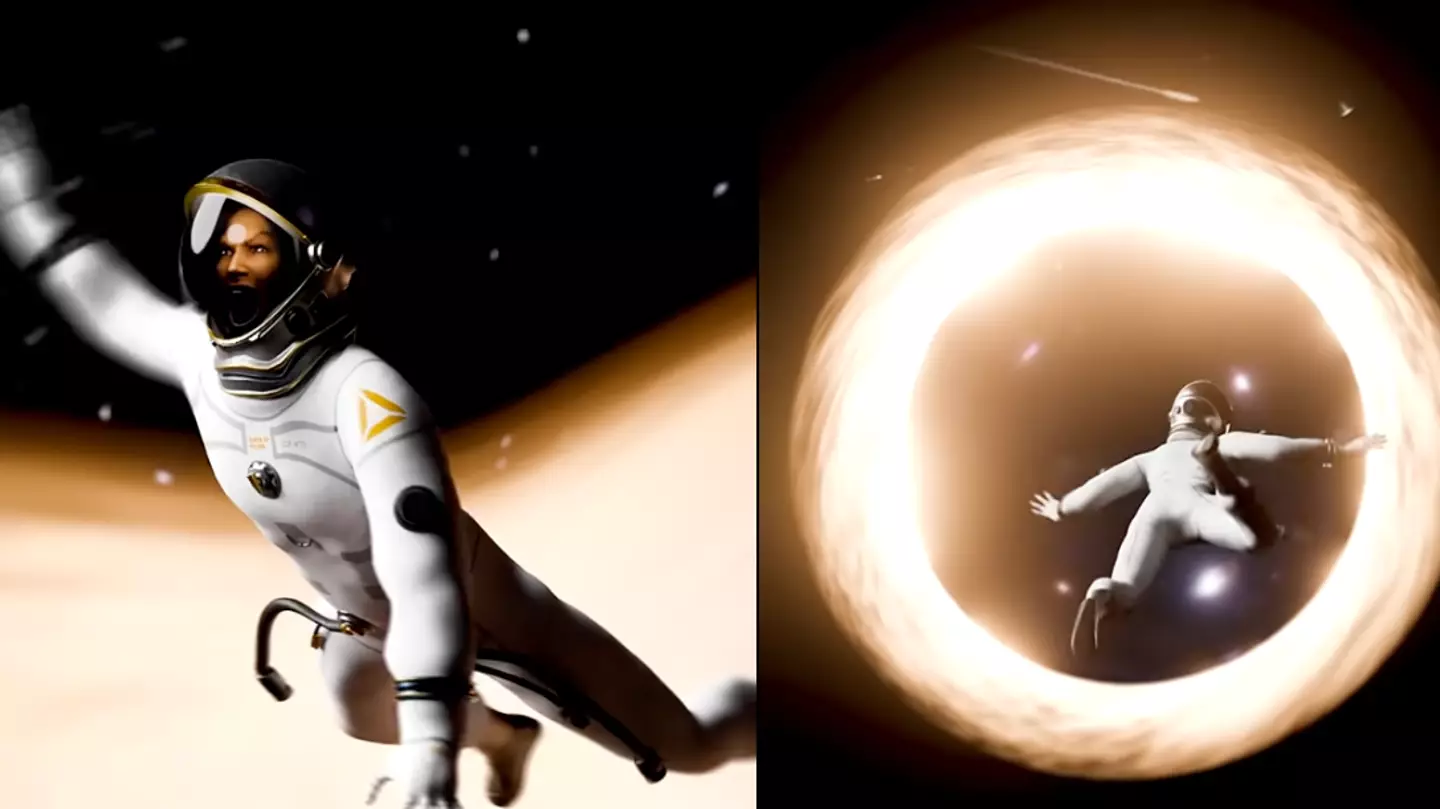
While we aren’t here to judge you for thinking about death by black hole in your spare time, it is certainly a mind-boggling concept.
Even NASA categorises the quintillion black holes in space ‘among the most mysterious cosmic objects’ that are ‘not fully understood’.
“These objects aren’t really holes. They’re huge concentrations of matter packed into very tiny spaces,” the space agency explains.
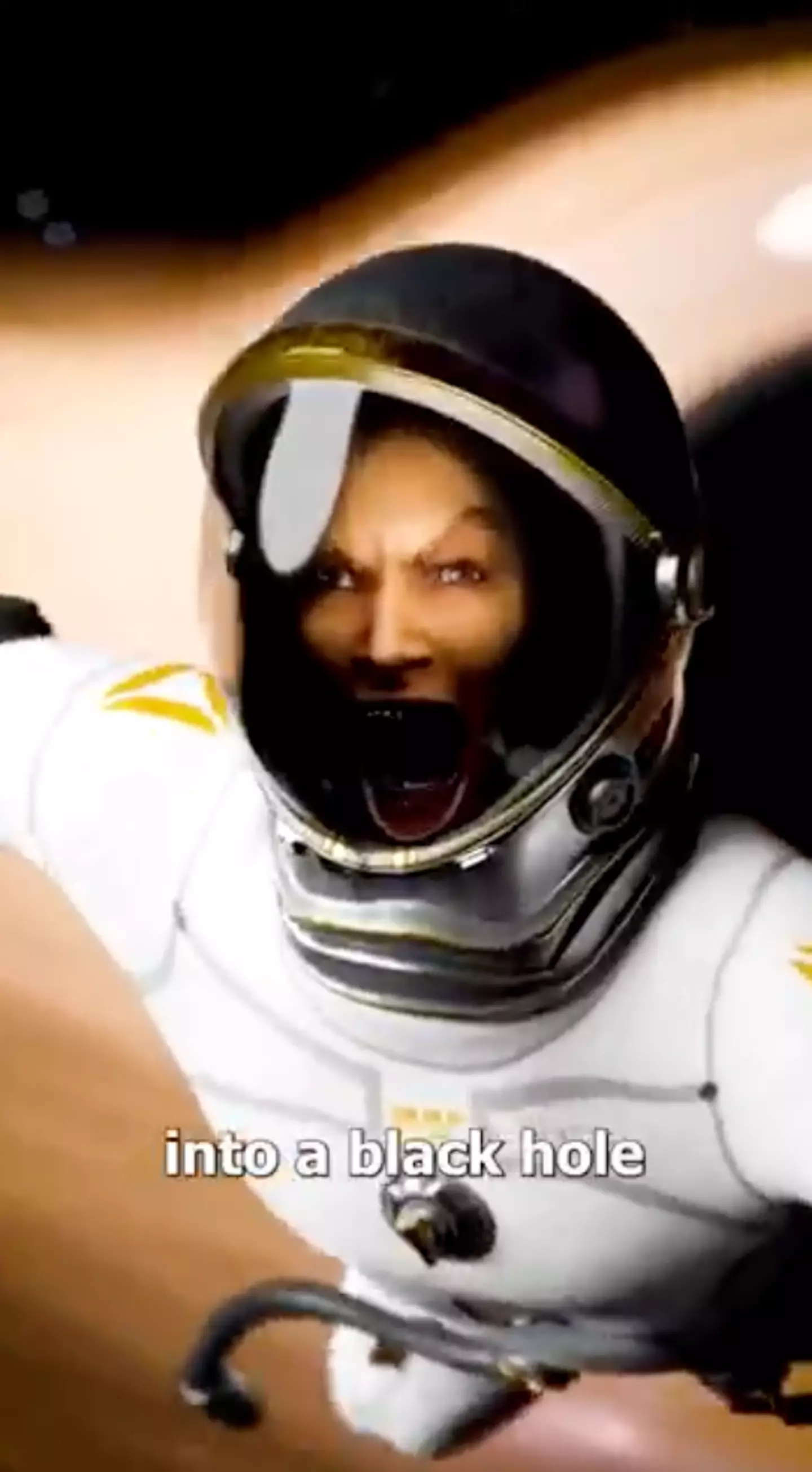
“A black hole is so dense that gravity just beneath its surface, the event horizon, is strong enough that nothing – not even light – can escape.
“The event horizon isn’t a surface like earth’s or even the sun’s. It’s a boundary that contains all the matter that makes up the black hole.
“There is much we don’t know about black holes, like what matter looks like inside their event horizons.
“However, there is a lot that scientists do know about black holes.”
Here’s where YouTuber Zack D. Films comes in, the content creator who shares simulation videos of the most random and interesting s**t you can think of.
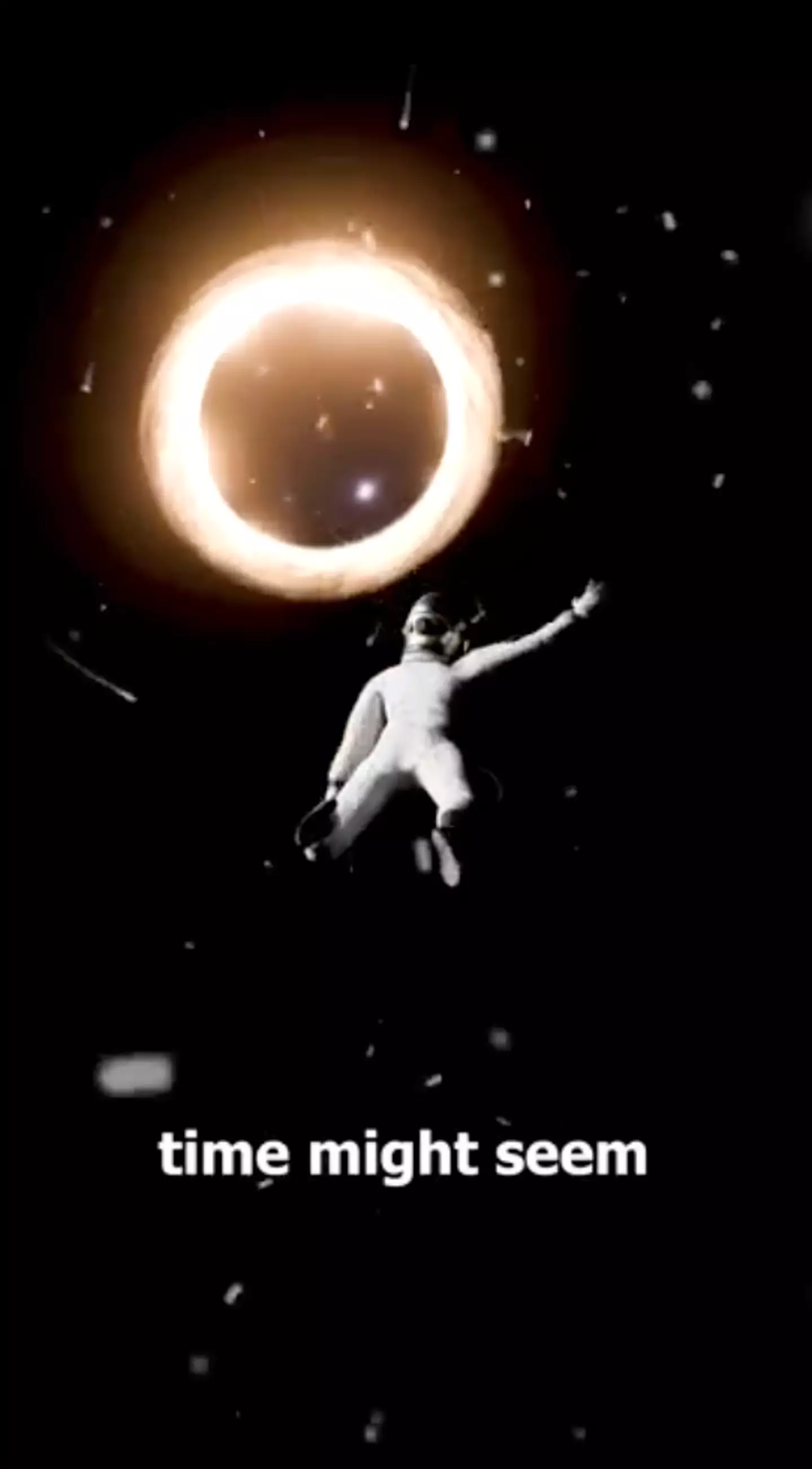
Viewers have been left terrified (YouTube/@zackdfilms)
He’s made simulations of countless things, from how drinking too much water can kill you, and what that looks like, to a simulation of what happens to your brain when you die.
In one of his YouTube Shorts, the video-maker showed us what he thinks would happen if we fell into a black hole.
“If you fell into a black hole, the gravitational pull would stretch you out in a process called spaghettification,” he began.
“As you get closer, the gravity at your feet would be much stronger than at your head, pulling you longer and thinner.
“Eventually, you’d pass the event horizon. At this point, time would appear to slow down for an outside observer, but for you, time might seem to speed up.
“Finally, you’d be crushed by the immense gravity, merging with the singularity at the black hole centre, lost forever in its depths.”
As expected, the comments section was filled with horror, as one viewer wrote: “That’s the scariest human I’ve seen. Thanks to whoever volunteered to do this.”
“I think the scariest part of this is dying in a way that no other human had died before, making it the loneliest, unpredictable and most terrifying death ever,” another penned.
“Not sure whats scarier, the idea of becoming spaghetti or the human model used for this animation,” a third agreed.
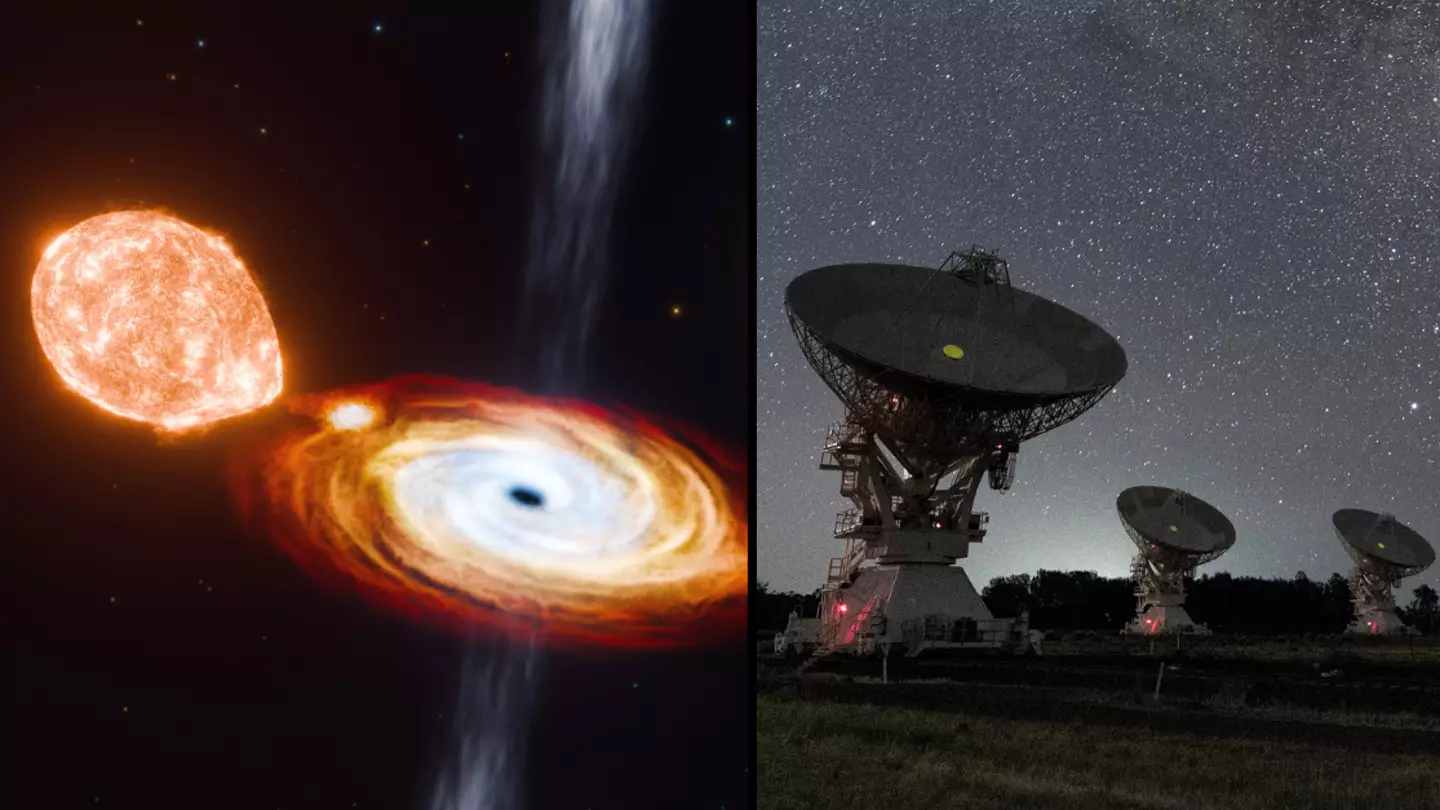
Usually, black holes come in pairs – that is, a black hole with one other object, with the two orbiting each other and slowly being dragged together over long periods of time.
Cosmic objects such as a star, or even another black hole, are what are usually seen alongside a black hole when they are discovered or monitored by astronomers.
But that isn’t the only way they can work, with this recent discovery serving as evidence of that.What is the triple black hole discovery?
Officially dubbed a ‘black hole triple’, it isn’t three black holes – that would put even the most extreme sci-fi filmmakers into a nervous sweat.
In a study appearing this week in Nature, physicists at MIT and Caltech have revealed that they have observed the phenomenon for the first time – however, it was completely by chance.
But what is it? Well, the new find sees a central black hole that is actually part way through consuming a small, nearby star that’s spiralling in very close to the black hole, every six and a half days.
This is where things get surprising, with a second star also appearing to be circling the black hole, but at a much greater distance.
The physicists estimate this far-off companion is orbiting the black hole every 70,000 years; a huge difference to the other star doing the rounds once a week or so.
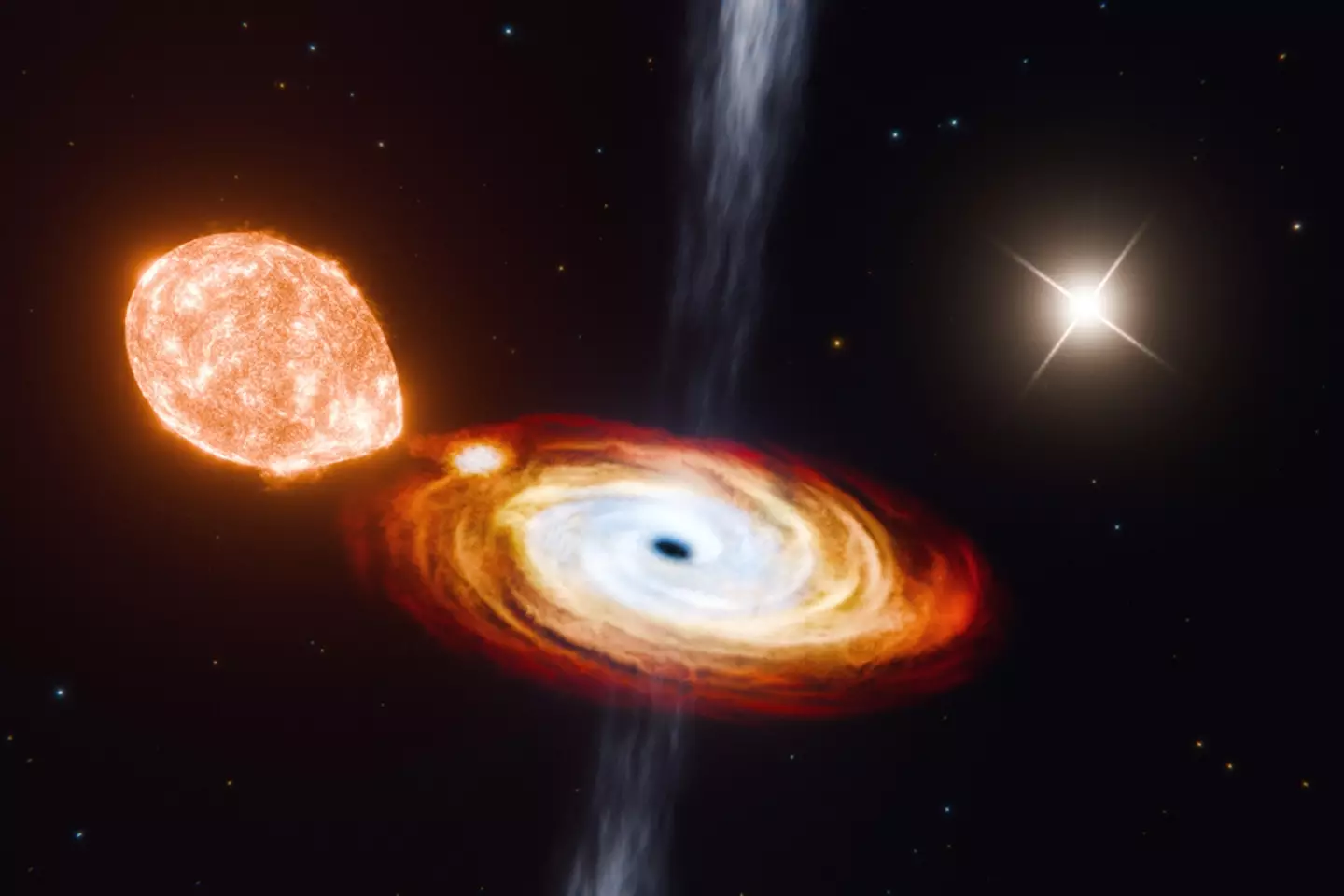
An illustration of the ‘black hole triple’ with two stars orbiting it (Jorge Lugo / MIT)
How did the triple black hole happen?
At this stage, scientists are questioning how the black hole is able to keep a gravitational pull on an object so far away, with experts asking about the origins of the black hole itself.
“Black holes are thought to form from the violent explosion of a dying star — a process known as a supernova, by which a star releases a huge amount of energy and light in a final burst before collapsing into an invisible black hole,” MIT says.
The belief is that the black hole was formed as a result of a typical supernova; which is scientific speech for a powerful and luminous explosion of a star.
The explosion may have essentially booted the outer star away all those years ago.
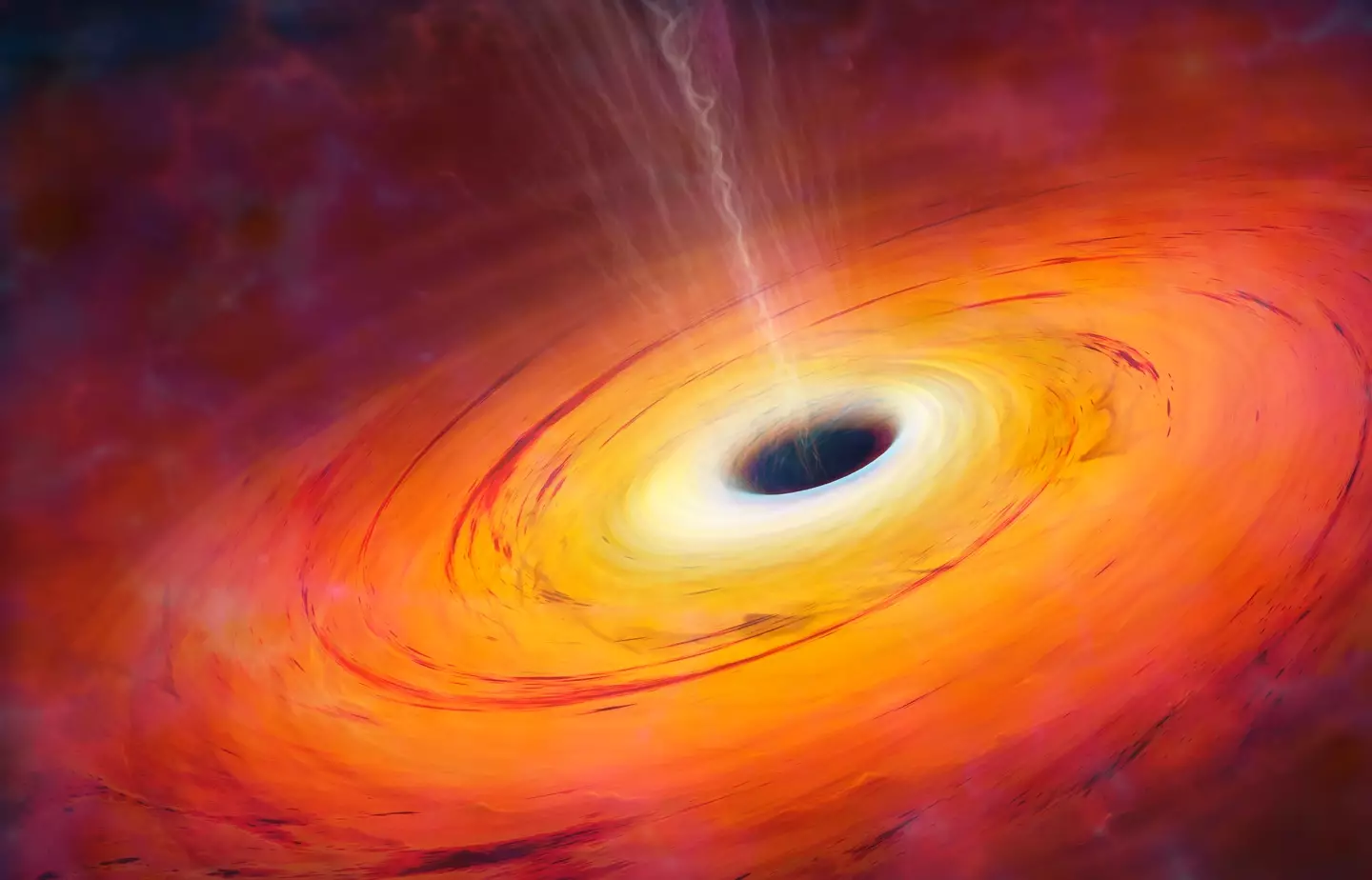
Humanity loves black hole chatter (Getty Stock Images)
‘Super exciting evolution’
“We think most black holes form from violent explosions of stars, but this discovery helps call that into question,” says study author Kevin Burdge, a Pappalardo Fellow in the MIT Department of Physics.
“This system is super exciting for black hole evolution, and it also raises questions of whether there are more triples out there.”
On the two stars orbiting the black hole, Burge says it is ‘almost certainly not a coincidence or accident’.
“We’re seeing two stars that are following each other because they’re attached by this weak string of gravity.” he said.
“So this has to be a triple system.”
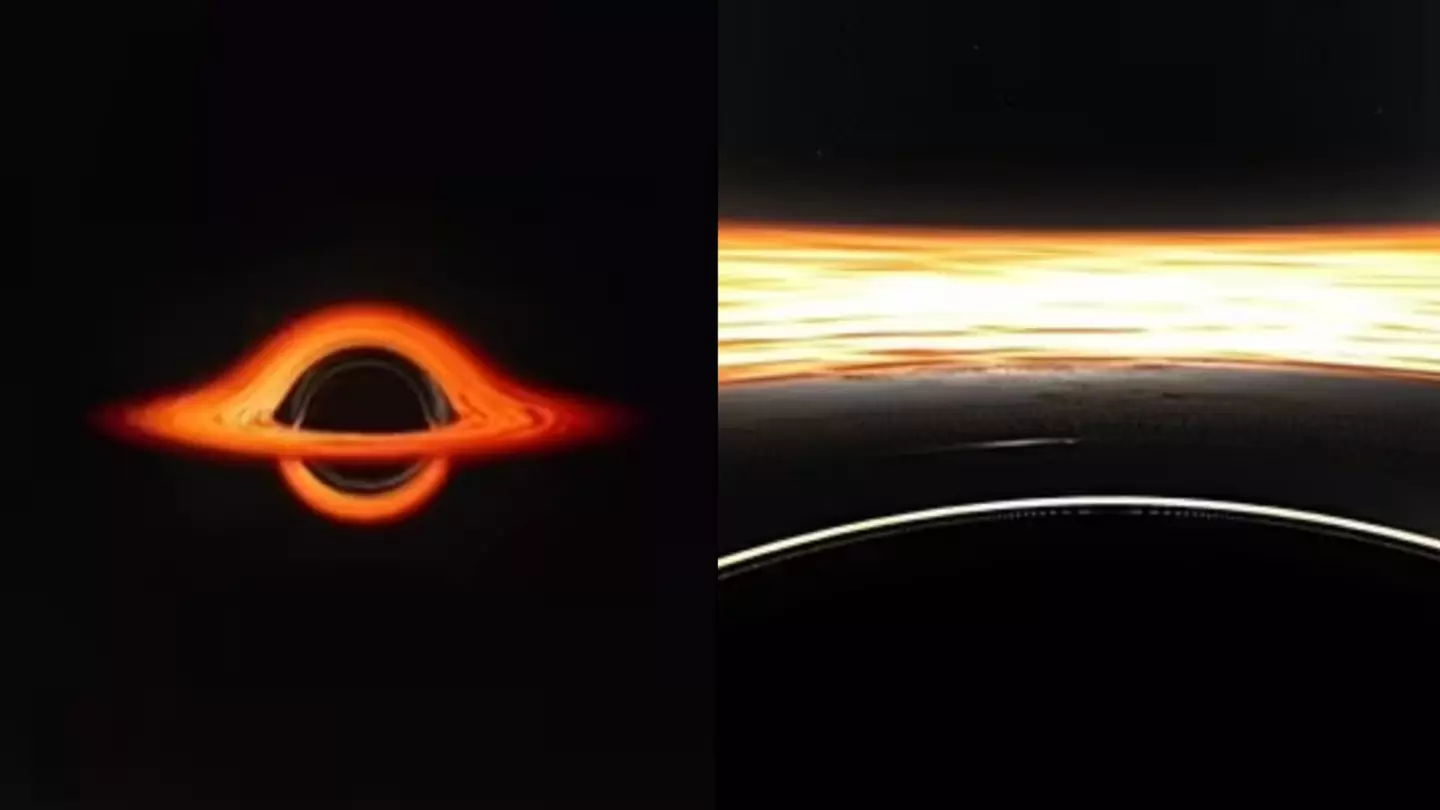
But there’s so much more to be known about black holes, seeing as we only captured our first photo of one about five years ago.Several will wonder what it’s actually like to fall into one, if it’s as bad as it sounds, and how it looks.
This brand new animation, which was uploaded to YouTube yesterday (6 May), showcases exactly how terrifying it would be to fall into the dark abyss of a black hole.
The highly advanced video took just five days to put together on just 0.3 percent of the 129,000 processors that are part of NASA’s Discover supercomputer, located at the NASA centre for Climate Simulation in Greenbelt, Maryland.
A regular laptop would have taken over 10 years to go through the same process, as over 10 terabytes of data would have needed to be processed.
In the video, we approach a supermassive black hole that has a mass 4.3 million times greater than our Sun, comparative with the colossal black hole located in the centre of the Milky Way galaxy.
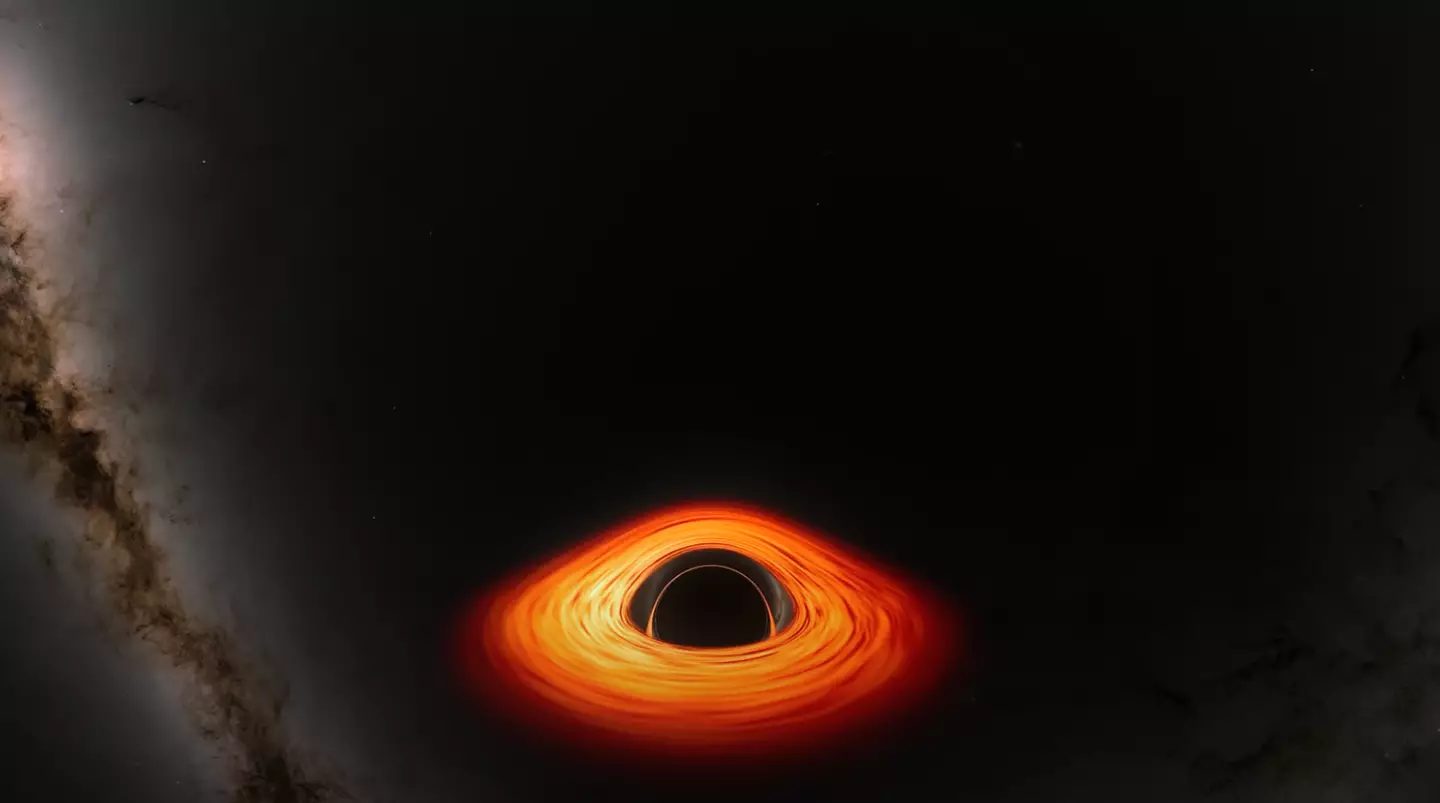
The simulation was incredibly detailed. (NASA)
The event horizon (aka the point of no return) spans approximately 16 million miles, or around 17 percent of the distance from the Earth to the Sun.
Physics professor at the University of Sussex, Xavier Calmet, said that the gravitational force of a black hole would become so intense that we would experience something called ‘spaghettification’.
“Your body will be stretched into a shape similar to that of a long pasta until it is reaped apart by the strong gravitational force,” he told The Daily Mail.
Sounds lovely.
The space agency further explained the video: “This new, immersive visualisation produced on a NASA supercomputer represents a scenario where a camera just misses the event horizon and slingshots back out.”
At the start of the video, we approach the void, seeing the bright orange ‘accretion disk’, which is a hot disk of gas that orbits the black hole, acting as its main source of light.
It’s made up of various material that emits energy, as it falls into the black hole, whether it’s gas, dust or matter – also seen is the thinner proton sphere, a thin ring of light formed near the black hole’s event horizon.
As we enter the black hole, we begin to spin as all light around us looks like it’s bending as we move further and further from any trace of light for eternity.

Everything looks warped and becomes distant once you get sucked in. (NASA)
NASA say that the video is largely sped up, reacting about 60 percent the speed of light to show the process in just about a minute – with the viewpoint meant to represent the perspective of an astronaut if humans were ever able to reach a black hole.
Jeremy Schnittman, an astrophysicist at NASA’s Goddard Space Flight Centre, explained: “If you have the choice, you want to fall into a supermassive black hole.

If you were to be floating about in the abyss of outer space and you somehow lost your spacesuit, it wouldn’t be good news.
Spoiler though: You wouldn’t react in the way that is often depicted in Hollywood films.
The video introduces the scenario by highlighting this, saying that you ‘surprisingly’ wouldn’t explode as science doesn’t work that way, despite how gory and epic it may look like on the big screen.
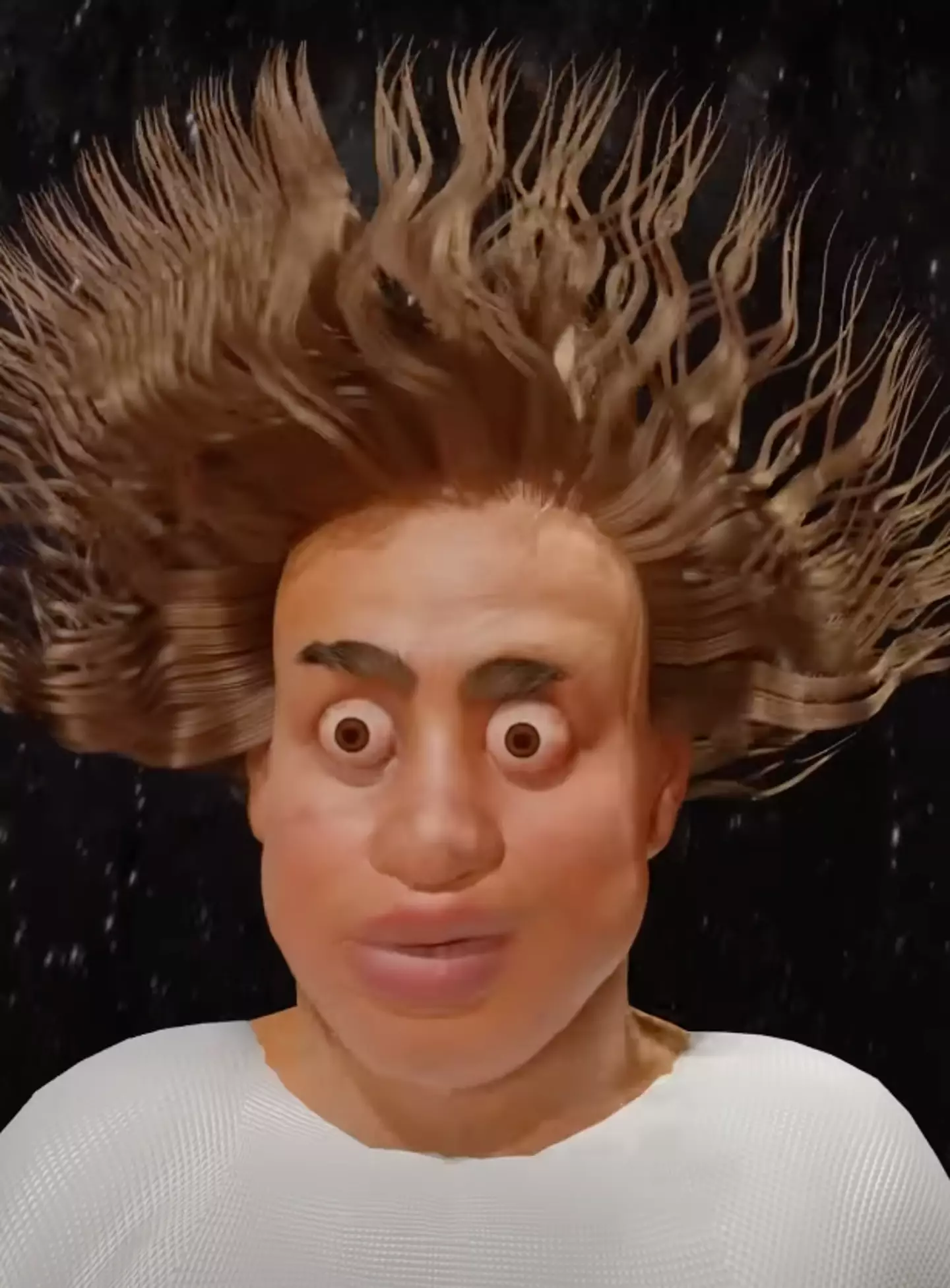
YouTube/@dgeye
What would actually happen in the first few seconds is – due to essentially being in a vacuum – the gases in your body would begin to expand, with the air in your lungs causing your ‘lung tissue to rupture’.
Good start then.
Within five seconds, ‘water on the surface of your eyes, skin and mouth’ would evaporate.
Water in your body would then begin to boil as parts of your body start to enlarge.
We’re only two-thirds water anyway.
Don’t worry though, as the elasticity of skin is strong enough to withstand the increase in pressure from your insides.
The video states that ‘your blood holds enough oxygen’ for around 15 seconds of brain activity – though following this period, you would black out.
90 seconds after that, your heart will slow down and eventually stop, disabling your brain.
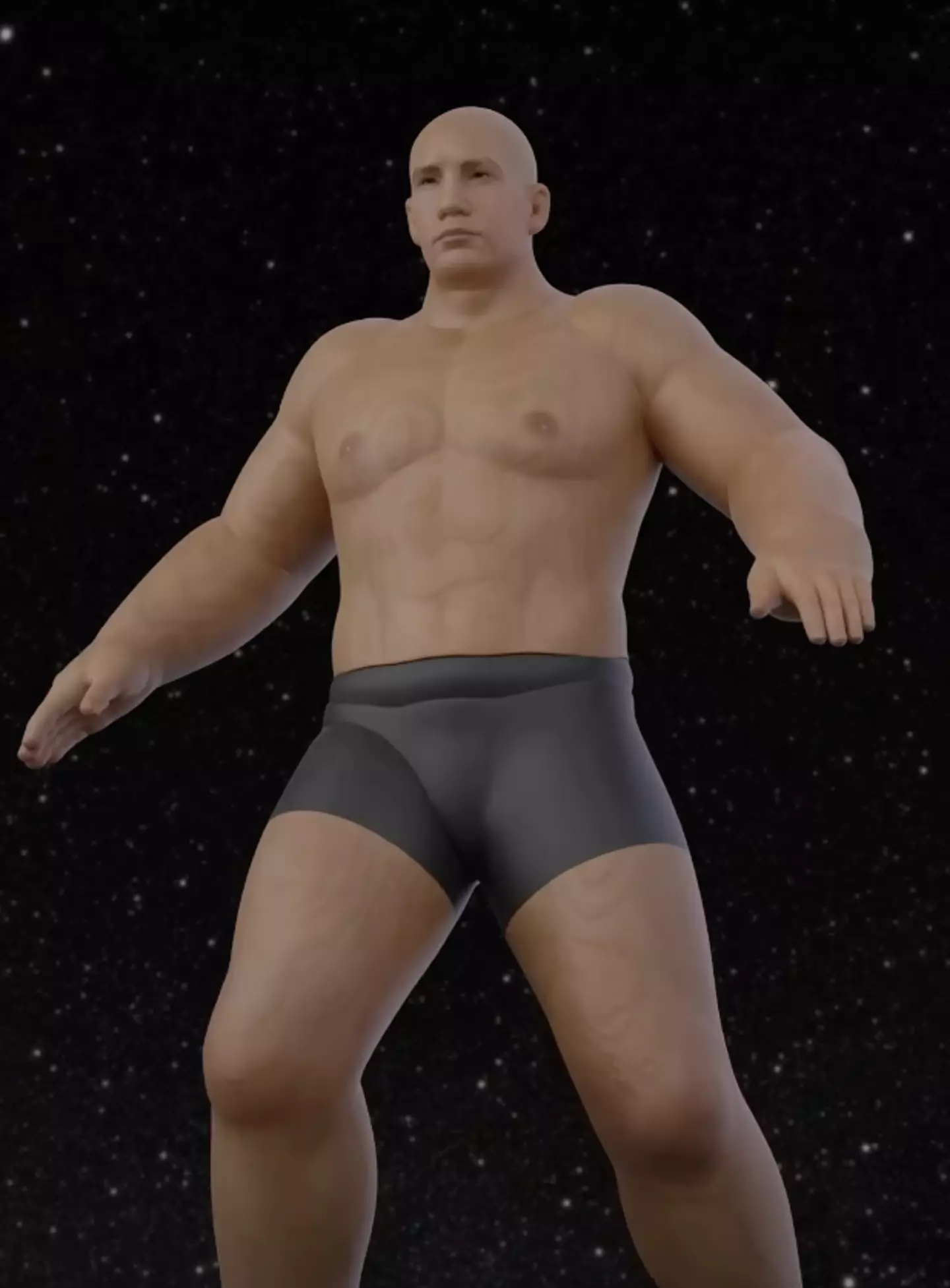
YouTube/@DGeye
That’s not it yet, because 90 seconds after that, you will finally die from asphyxiation, again dispelling the myth that you would instantly freeze as there is no atmosphere in space.
Dr. Kris Lehnhardt, element scientist for the Human Research Program at NASA, told Live Science: “As you can imagine, given that 60 per cent of the human body is made up of water, this is a serious problem,
“In essence, all of your body tissues that contain water will start to expand.”
An aerospace engineer at NASA named Jim LeBlanc actually came close to experiencing this.
While testing the performance of spacesuits in a vacuum chamber in 1966, the hose which supplied pressurised air into his suit was disconnected.
LeBlanc explained in the documentary series, Moon Machines: “As I stumbled backwards, I could feel the saliva on my tongue starting to bubble just before I went unconscious, and that’s kind of the last thing I remember.”
Well, if you’ve heard all of this and still aspire to visit the depths of space, good luck to you.
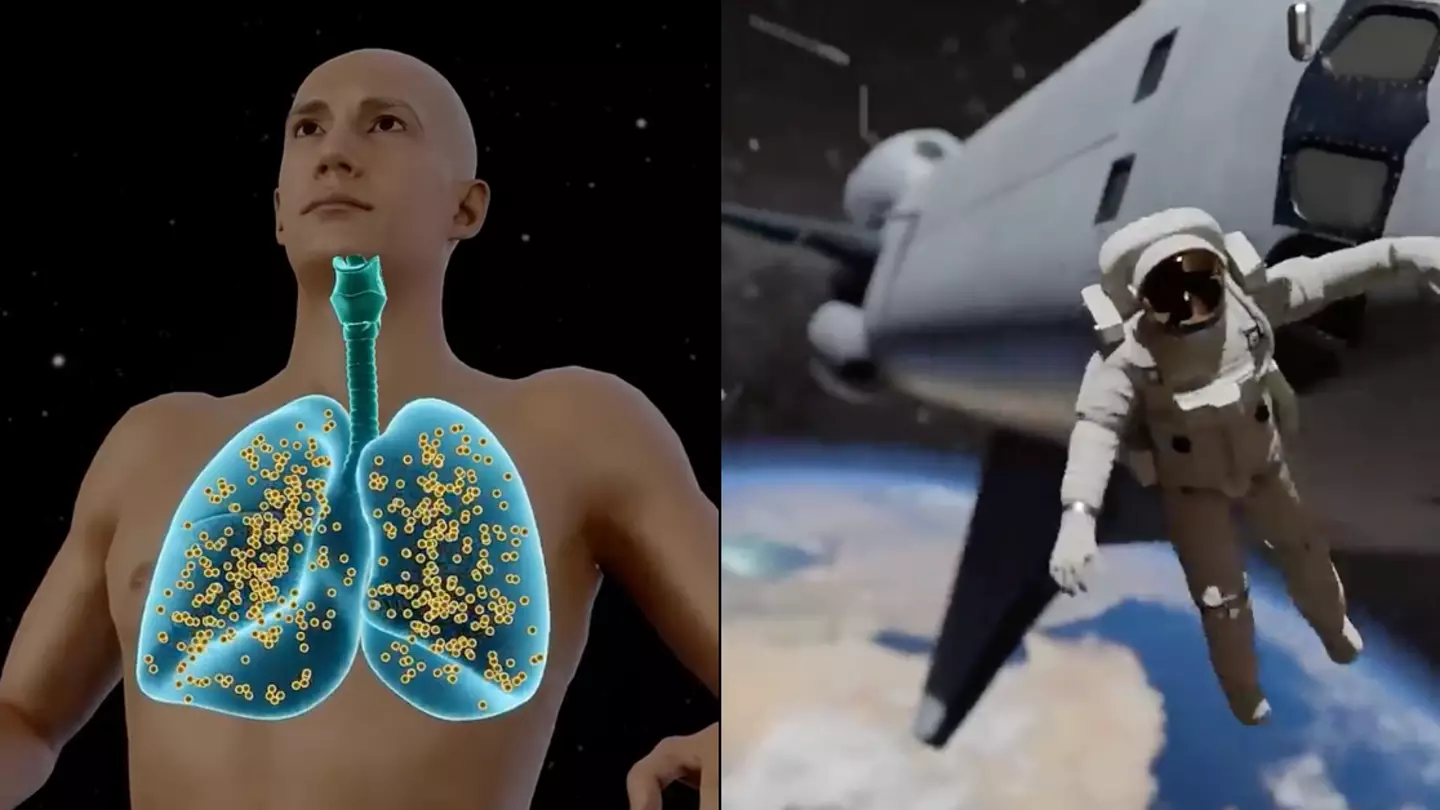
The bizarre clip was posted on YouTube by DG EYE science, and reveals exactly how our bodies would react if we were in the unforgiving vacuum of space with no protection.
Space suits are made with the finest technology to protect us from the harsh environment that is space, and to be lost in space without one might be a lot of people’s worst nightmares.Apparently, in the first few seconds without a space suit, the gases in the human body would begin to ‘expand’, causing ruptures in the lung tissues.
In just five seconds, the ‘water on the surface of eyes, skin and mouth’ would start evaporating as the water in your blood begins to ‘boil’.
Watching the video closely, viewers will notice the body swelling up and growing in size, as the skin is ‘elastic and strong enough to withstand pressure’.
After all of this, the heart will then ‘slow down and stop’ as the individual floating around in space dies of asphyxiation.

Going into space without a spacesuit wouldn’t cause you to explode, despite popular belief (YouTube/@DGeye)
There’s no atmosphere or pressure in space, and in the absence of pressure, water within our bodies would boil, turning from a liquid into a gas.
Considering as humans we are two thirds water, this is kind of a big deal.
“As you can imagine, given that 60 percent of the human body is made up of water, this is a serious problem,” Dr. Kris Lehnhardt, element scientist for the Human Research Program at NASA, told Live Science.
“In essence, all of your body tissues that contain water will start to expand.”
One astronaut who came close to experiencing this was aerospace engineer at NASA, Jim LeBlanc.

After your body swells up, you would die (YouTube/@DGeye)
In 1966, he was testing the performance of spacesuits in a vacuum chamber. At one point, the hose which supplied pressurised air into his suit was disconnected.
LeBlanc explained that he started to feel the effects before he eventually blacked out.
“As I stumbled backwards, I could feel the saliva on my tongue starting to bubble just before I went unconscious, and that’s kind of the last thing I remember,” he explained in documentary series, Moon Machines.
Considering how horrifying this is, it’s kind of surprising that people *want* to venture into space.


